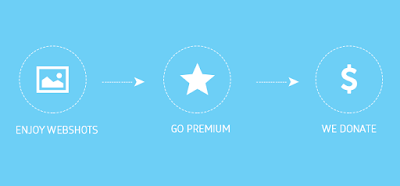Digital Blog Post #C (3,8)
Chap 8
 Concept 2) The second concept I will reflect upon is Media Literacy, which is where students learn ways to think critically about their experiences with entertainment and social media (Hobbs,2011). Media literacy promotes a visual learning style which can be very effective for some students. Some technologies teachers can use include online newspapers and student created web materials. Media literacy is being able to "replace media programming with ideas of your own"(Potter, 2010, p. xviii).
Concept 2) The second concept I will reflect upon is Media Literacy, which is where students learn ways to think critically about their experiences with entertainment and social media (Hobbs,2011). Media literacy promotes a visual learning style which can be very effective for some students. Some technologies teachers can use include online newspapers and student created web materials. Media literacy is being able to "replace media programming with ideas of your own"(Potter, 2010, p. xviii).
Concept 3) The third concept I will reflect upon is Student Centered Instruction also known as learner centered. Student centered instruction is a great hands on source for students. Students are actively part of all element of a class such as conducting activities, engaging in discussions, and planning lessons. Student centered instruction extends active engagement with academic material and real life situations.It also can help increase the students involvement in their school work.
Conclusion) After reviewing all three concepts I've came to the conclusion that technology is eventually going to play a big role in classrooms in our society. I really thought that all three concepts were geared towards a hands on experience for students and teachers. Hands on is a great learning tool for students. I was super shocked that on Skype you could video conference with students and teachers all over the world. Technology is slowly evolving overtime.
References
Young, S. (2012, September 24). 5 Tech-Friendly Lessons to Encourage Higher-Order Thinking -- THE Journal. Retrieved from https://thejournal.com/articles/2012/09/24/5-mediarich-lesson-ideas-to-encourage-higherorder-thinking.aspx
Hobbs, R. (2011). Digital and media literacy: Connecting culture and classroom. Thousand Oaks, CA: Corwin Press.
Potter, W.J. (2010). Media literacy (5th ed.). Thousand Oaks, CA: Sage Publications.
Concept 1 ) The first concept I will reflect upon is the use of Skype. As stated in the book Skype turns a computer into a telephone and a video conference at the same time. Skype makes it possible for classroom teachers to make connections with other students and teachers from all over the world. I think that is a great way for students to learn about other cultures around the world. It gives them a opportunity to visually and virtually see how other cultures work. Here is a short clip that I watched that really gave me an insight on how Skype really works between the two classrooms. I currently work at a preschool that offers a Spanish Immersion Program and I think this would be a great attribute to the class.
 Concept 2) The second concept I will reflect upon is Media Literacy, which is where students learn ways to think critically about their experiences with entertainment and social media (Hobbs,2011). Media literacy promotes a visual learning style which can be very effective for some students. Some technologies teachers can use include online newspapers and student created web materials. Media literacy is being able to "replace media programming with ideas of your own"(Potter, 2010, p. xviii).
Concept 2) The second concept I will reflect upon is Media Literacy, which is where students learn ways to think critically about their experiences with entertainment and social media (Hobbs,2011). Media literacy promotes a visual learning style which can be very effective for some students. Some technologies teachers can use include online newspapers and student created web materials. Media literacy is being able to "replace media programming with ideas of your own"(Potter, 2010, p. xviii).Concept 3) The third concept I will reflect upon is Student Centered Instruction also known as learner centered. Student centered instruction is a great hands on source for students. Students are actively part of all element of a class such as conducting activities, engaging in discussions, and planning lessons. Student centered instruction extends active engagement with academic material and real life situations.It also can help increase the students involvement in their school work.
Conclusion) After reviewing all three concepts I've came to the conclusion that technology is eventually going to play a big role in classrooms in our society. I really thought that all three concepts were geared towards a hands on experience for students and teachers. Hands on is a great learning tool for students. I was super shocked that on Skype you could video conference with students and teachers all over the world. Technology is slowly evolving overtime.
References
Young, S. (2012, September 24). 5 Tech-Friendly Lessons to Encourage Higher-Order Thinking -- THE Journal. Retrieved from https://thejournal.com/articles/2012/09/24/5-mediarich-lesson-ideas-to-encourage-higherorder-thinking.aspx
Hobbs, R. (2011). Digital and media literacy: Connecting culture and classroom. Thousand Oaks, CA: Corwin Press.
Potter, W.J. (2010). Media literacy (5th ed.). Thousand Oaks, CA: Sage Publications.


Comments
Post a Comment